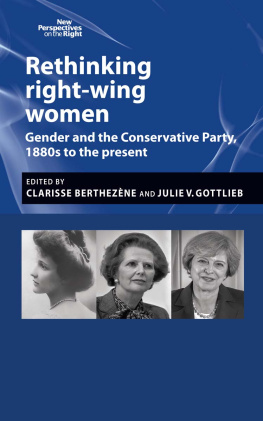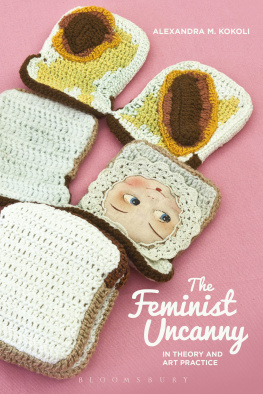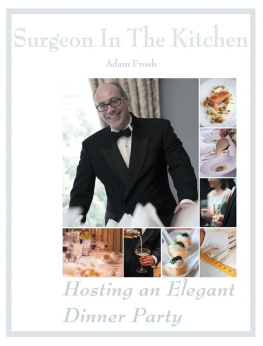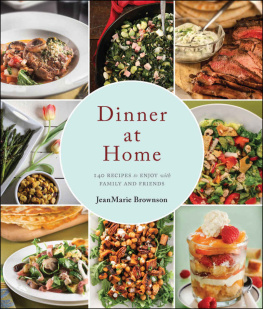FOREWORD
THE BROOKLYN MUSEUM AND THE DINNER PARTY
One day, more than a decade ago, Elizabeth A. Sackler, public historian, progressive philanthropist, now a Trustee of the Brooklyn Museum, and extraordinary friend of longstanding, met with me carrying a copy of a book on The Dinner Party under her arm. Placing it before me, she asked if I would like to have it. Certainly, I replied, not understanding for several minutes that what she meant was not the book, but the iconic work of art itself. The extraordinary ensuing conversation was the start of what we have been referring to as our great adventure, and the gift of that bookthe power of that bookwas the founding gesture of the Elizabeth A. Sackler Center for Feminist Art, which houses as its exceptional centerpiece The Dinner Party.
My enthusiasm for Elizabeths idea was based not only on my own interest in developing a unique exhibition model for an innovative institution such as ours, but also in recalling that the Brooklyn Museum had, at that point, already played a significant role in the history of The Dinner Party. The symmetry of the Museums early advocacy of the work and its final disposition here as a permanent installation was impossible to resist.
That joint history began in the early 1980s. The Brooklyn Museum was the second major museum venue to exhibit The Dinner Party, after its debut at the San Francisco Museum of Modern Art on March 14, 1979. As other museums and institutions shied away from presenting the then-controversial work of art, Brooklyn and San Francisco were in fact the only two large institutions to participate in the travel schedule. The Dinner Party arrived on the East Coast, opening at the Brooklyn Museum on October 17, 1981. The reception was attended by 4,500 guests, the largest number to attend an opening in the Museums history. One hundred thousand visitors waited patiently in long lines to see The Dinner Party during its two-month run (I was one of them). As at most of its other venues, funds to make the presentation possible were raised by a number of local and national womens groups, including the Womens Fund Joint Foundation; Ms. magazine; the National Womens Political Caucus; and the firm Arts, Letters and Politics. Collectively, these groups raised over forty thousand dollars for the Brooklyn showing, more than half the cost of mounting the exhibition.
According to Michael Botwinick, who directed the Brooklyn Museum from 1974 to 1982 and championed the Museums presentation of the piece, visitors ranged widely over a far broader spectrum of age, background, and origin than we usually saw. And most exciting, they were energized. No parades of bored visitors, eyes glazed over, walking down the middle of the galleries simply because this was the show to see. They came early, they stayed late, they returned again and again, and even when they were profoundly challenged and disturbed by the piece, they told us they felt it was important that they had seen it. More than thirty years later, we continue to see that strong legacy of viewer engagement and loyalty every day in the galleries of the Elizabeth A. Sackler Center for Feminist Art.
Building on this history was part of our strategy as we began planning the Sackler Center. In 2002, five years before the grand unveiling of its newly designed home, The Dinner Party was presented in its second special temporary exhibition at the Brooklyn Museum. And once again, the public came, with over eighty thousand visitors seeing the work during its run from September 20, 2002, through February 9, 2003.
During this time we were hard at work conceptualizing, designing, and building the Elizabeth A. Sackler Center for Feminist Art. A very large and extremely talented team came together with founding curator Maura Riley to make this happen. Knowing the importance of a flexible exhibition gallery and a functioning space for the Centers activities, and the critical role of a spectacular showplace for The Dinner Party itself, we initiated an architectural competition and ultimately selected the proposal of Susan Rodriguez to pursue for realization. Rodriguez, then Design Partner at the office of Polshek Partnership Architects (and now Founding Partner and Design Principal at Ennead Architects), worked closely with us to visualize a center that is called upon to accommodate a multitude of demands: the unique and dramatic Dinner Party Gallery; the changing-exhibition spaces that surround it, including the Herstory Gallery, devoted to smaller exhibitions inspired by the 1,038 names that appear on The Dinner Party; and the Forum, which is at once a gathering place and educational site that also houses research resources developed by the Center and documents its activities and accomplishments.
At its core, the Sackler Center is not simply a venue but a dynamic exhibition and education environment, dedicated to feminism in artits past, present, and future. As one of the most ambitious, influential, and enduring intellectual legacies of the late twentieth century, feminism has played a vital role in the art world over the last fifty years, and the Elizabeth A. Sackler Center for Feminist Art participates in the new thinking and vibrant activity which keep that legacy current. Toward that end, we have presented nineteen special exhibitions in the Sackler Center since it opened in 2007. In 2013, four generations of Sackler family members established an endowment for the Sackler Family Curator, ensuring for perpetuity a curatorial voice within the Museum devoted exclusively to developing exhibitions and programs focusing on current thinking about feminism in the visual arts; Catherine Morris is the first curator to hold the title. Programming is an integral part of what we do; presenting dozens of events annually, from tours for children to academic conferences and artist performances, we seek out projects and ideas that supplement our exhibitions, as well as other opportunities to bring significant dialogue into the Sackler Center that we might not have the chance to address directly in our general exhibition calendar.













